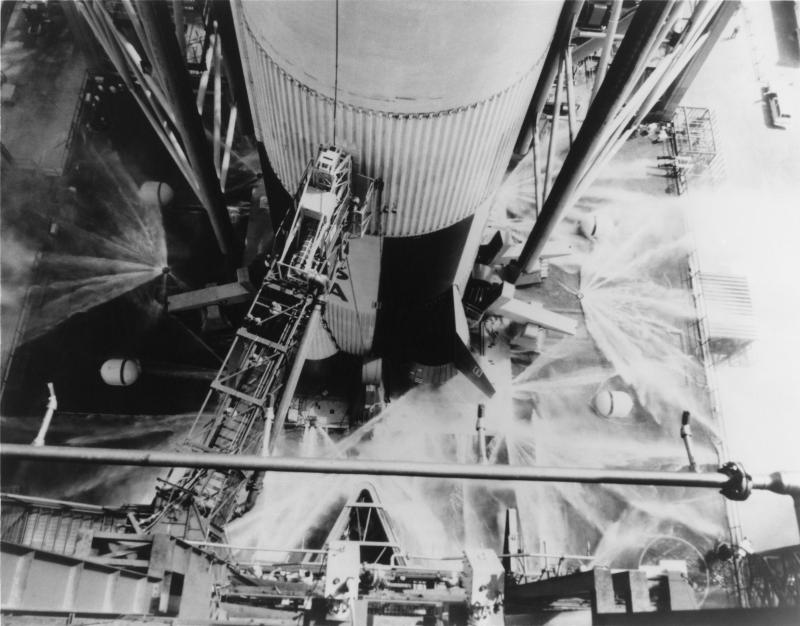SA-501 Water Control System Test
To protect against the exhaust of a Saturn V launch, the mobile launcher employed a water control system to deluge the launch pad and surrounding area with water. One rarely sees this system in action, as it's hard to see through the exhaust flames as the Saturn V is lifting off.
This photo shows a test of the water control system. Although undated, it appears to have been taken prior to the launch of Apollo 4: One can see the repainted areas on the S-IC's intertank structure (originally, portions of the intertank structure were painted black; SA-501 and SA-502's first stage were repainted in the Vehicle Assembly Building). The "clam shell" style tail service mast hoods were used only during Apollo 4. Made of a lightweight fiberglass structure reinforced with aluminum honeycomb, the Saturn V Launch Vehicle Flight Evaluation report: AS-501 Apollo 4 Mission simply states that these "hoods were carried away by exhaust blast allowing the aft umbilical carriers and service lines to be damaged by engine blast and fire." I've heard (unconfirmed) reports that these hoods actually sailed through the air and landed in a parking lot, destroying three cars in the process.
By the time of the launch of SA-502 (Apollo 6), the clam shell hoods were replaced with the more familiar "roll top" hoods.
Click image for a 5698x4456 pixel version of this image in a new window.
From the Saturn V Collection, Dept.
of Archives/Special Collections, M. Louis Salmon Library, University of
Alabama in Huntsville.
Scan and restoration by heroicrelics.
The caption on the reverse of this photo reads
For Immediate Release
Launch Control and Checkout Equipment
DAYTONA BEACH, FLA.—General Electric's Apollo Systems Organization has provided a broad range of equipment used to control and check out the facilities used in launching America's Apollo astronauts. This hardware is known as Launch Control and Checkout Equipment (LCCE), and includes systems which spread over the entire Cape Kennedy Complex. Shown here is a test of the Water Control System used for cooling and quenching the launch site and storage areas before, during, and after a launch.

